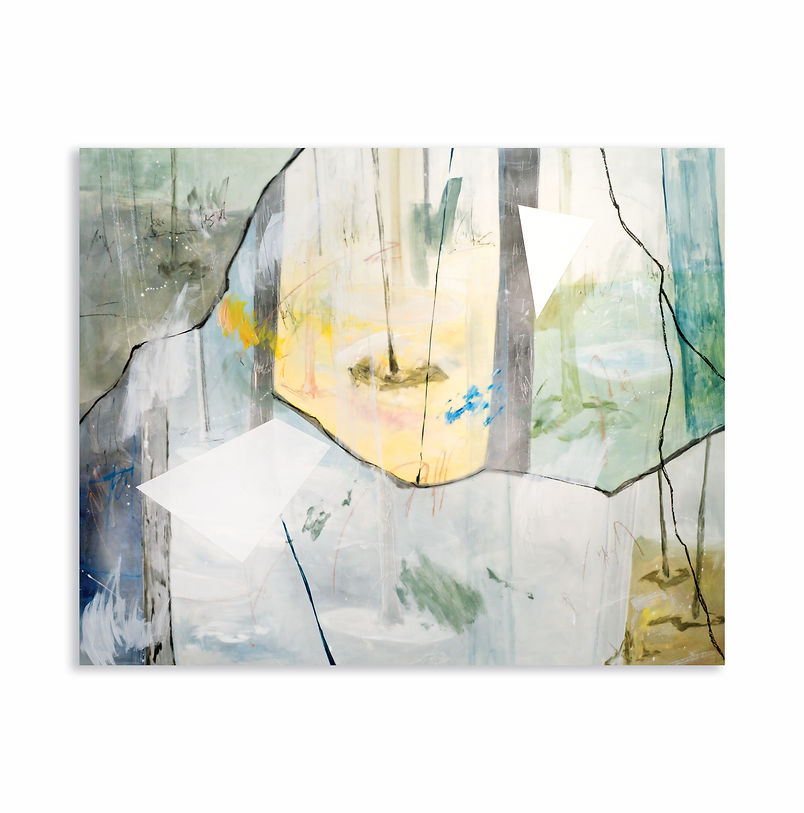top of page
It dwells within
Es weilt im Inneren
内側に潜む
This group of works is the main series of MasakiHagino's work. Based on his study of human perception and the subjective representation of space in the brain, the works are expressed in layers of wax or silicone and oil colours by using multispatial perspective technique developed by himself. His works have been exhibited in many galleries and art fairs in Europe and abroad, and have also been nominated and won several prestigious awards.
Diese Werkgruppe ist die wichtigste Serie im Schaffen von Masaki Hagino. Ausgehend von seiner Studie über die menschliche Wahrnehmung und die subjektive Darstellung des Raums im Gehirn werden die Werke in Schichten aus Wachs oder Silikon und Ölfarben unter Verwendung der von ihm selbst entwickelten Technik der räumlichen Perspektive dargestellt. Seine Werke wurden in vielen Galerien und auf Kunstmessen in Europa und im Ausland ausgestellt und wurden für mehrere renommierte Preise nominiert und ausgezeichnet.

萩野のメインシリーズであるこの作品群は、人間の知覚や脳内の主観的な空間表現に関する研究に基づき、独自に開発した多空間遠近法を用いて、ワックスやシリコンと油彩のレイヤーで表現している。萩野の作品は、ヨーロッパ内外の多くのギャラリーやアートフェアで展示され、権威ある賞にもノミネート、受賞している。
This work is the result of extensive research and experimentation conducted by Hagino during his studies in Germany. He created a technique named 'multiple spatial perspective' in order to confront the difficult problems of 'perceptual cognition in the human brain, which is continuously layered and complemented in fragments' and 'the establishment of a new expression in the spatial representation of painting'. This is based on the brain science-based concept that the perceived spatial perception in the human brain is folded and filtered by emotions, memories and knowledge, and aims at a complex mixture of perspective from different periods in Western and Asian art. He succeeded in this seemingly impossible task by using intricate screen divisions and multiple layers of translucent materials.
The innermost layer, or the first layer, is painted in space on canvas or other surface using mainly oil paints, while the second layer is a thin layer of translucent wax, silicone or synthetic resin, which covers the entire canvas The trees, which are already painted with complex and divergent back and forth relationships and perspectives at the first layer, are perceived by the viewer By starting from the second layer as if to complete the painting from scratch again, the already complex perspective is made more complex and a departure from the usual spatial representation of paintings is attempted.
Due to the thickness of the material (5 mm - 1 cm), the paint and lines on the second layer cast a faint shadow on the first layer. The matiere and shadows physically created on the screen have a very significant visual effect. The back and forth relationship with the first layer is further complicated by the transmission of the second layer of oil paint, thinned with turpentine oil.

この作品群は、萩野がドイツ留学中に行った膨大な研究と実験の結果である。彼は「人間の脳内で、断片的に重ねられ補完させ続ける知覚的認知」と、「絵画の空間表現における新たな表現の確立」という難題に立ち向かうべく、「多重空間遠近法」という名の技法を生み出した。これは人間の脳内で知覚した空間認識が折り重なっていることや、感情や記憶、知識などのフィルターがかけられていることなどの脳科学をベースとしたコンセプトを元に、西洋美術とアジア美術の異なる時代の遠近法を複雑に混ぜることを目的としている。一見不可能に見えるこの難題を、彼は複雑な画面分割と半透明なマテリアルを何度も重ねることで実現させた。
一番奥のレイヤー、つまり一層目はキャンバスなどの上に油絵の具を中心とした画材で空間を描き、2層目にはワックスやシリコン、合成樹脂などの半透明のレイヤーを薄く伸ばし、キャンバス全体を覆う。一層目の段階ですでに複雑で乖離的な前後関係や遠近感で描かれた木々は、鑑賞者の知覚に違和感を与えている。二層目からはまた0から絵画を完成させるようにスタートすることで、すでに複雑に描かれた遠近感をより複雑化させ、通常の絵画の空間表現からの逸脱を図る。
5mm-1cmのマテリアルの厚みにより、二層目に塗られた絵の具や線には、うっすらと影が一層目に落ちる。画面上に物理的に作られたマチエールと影は、視覚的に非常に大きな効果をもたらす。またテレピン油で薄められた二層目の油絵の具が透過していることで、一層目との前後関係をさらに複雑にしている。


By dividing and repositioning the elements that make up the painting, and the elements through which humans perceive the painting, onto the canvas, it becomes possible to touch on the invisibility of 'subjectivity', where each person sees different things. Hagino presents a completely new way of being in painting, moving back and forth between this natural human system and the reconfiguration of painting that has continued for thousands of years.
絵画を構成する要素、人間が絵画を知覚する要素を分割しキャンバスに再配置することで、人それぞれが見ているものが異なる「主観性」という不可視のものに触れることが可能になる。萩野はこの人間が持つ当然のシステムと、何千年も続く絵画の再構成とを行き来しながら、全く新しい絵画の在り方を提示している。

"A study of the relationship between subjectivity, time and memory LXI"
Mixedmedia with beeswax on canvas, 91 x 72 cm, 2024

"A study of the relationship between subjectivity, time and memory LXII"
Mixedmedia with beeswax on canvas, 91 x 72 cm, 2024

"A study of the relationship between subjectivity, time and memory LXVII"
Mixedmedia with beeswax on canvas, 116 x 91 cm, 2024

"A study of the relationship between subjectivity, time and memory XLIX"
Mixedmedia with beeswax on canvas, 91 x 72 cm, 2024

"A study of the relationship between subjectivity, time and memory L"
Mixedmedia with beeswax on canvas, 116 x 91 cm, 2024

"A study of the relationship between subjectivity, time and memory XLVII"
Mixedmedia with silicone on canvas, 130 x 162cm, 2024

"A study of the relationship between subjectivity, time and memory XXXV"
Mixedmedia with silicone on canvas, 60 x 50cm, 2023

"A study of the relationship between subjectivity, time and memory XXXIV"
Mixedmedia with silicone and beeswax on canvas, 45,5 x 38cm, 2023

"A study of the relationship between subjectivity, time and memory XVII"
Mixedmedia with silicone on wood, 80 x 100cm, 2023

"A study of the relationship between subjectivity, time and memory XXVI"
Mixedmedia with silicone on canvas, 50 x 60cm, 2023

"The inner forest inside me X"
Mixedmedia with Paraffinwax on wood, 50 x 70cm, 2021

"The inner forest inside me I"
Mixedmedia with Paraffinwax on wood, 120 x 150cm, 2019

"The inner forest inside me XII"
Mixedmedia with Paraffinwax on wood, 120 x 150cm, 2019

"The forest inside me VII"
Mixedmedia with Paraffinwax on wood, 120 x 150cm, 2014
bottom of page



